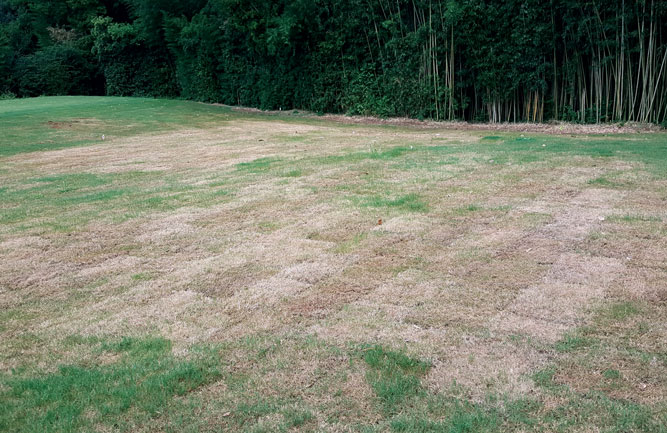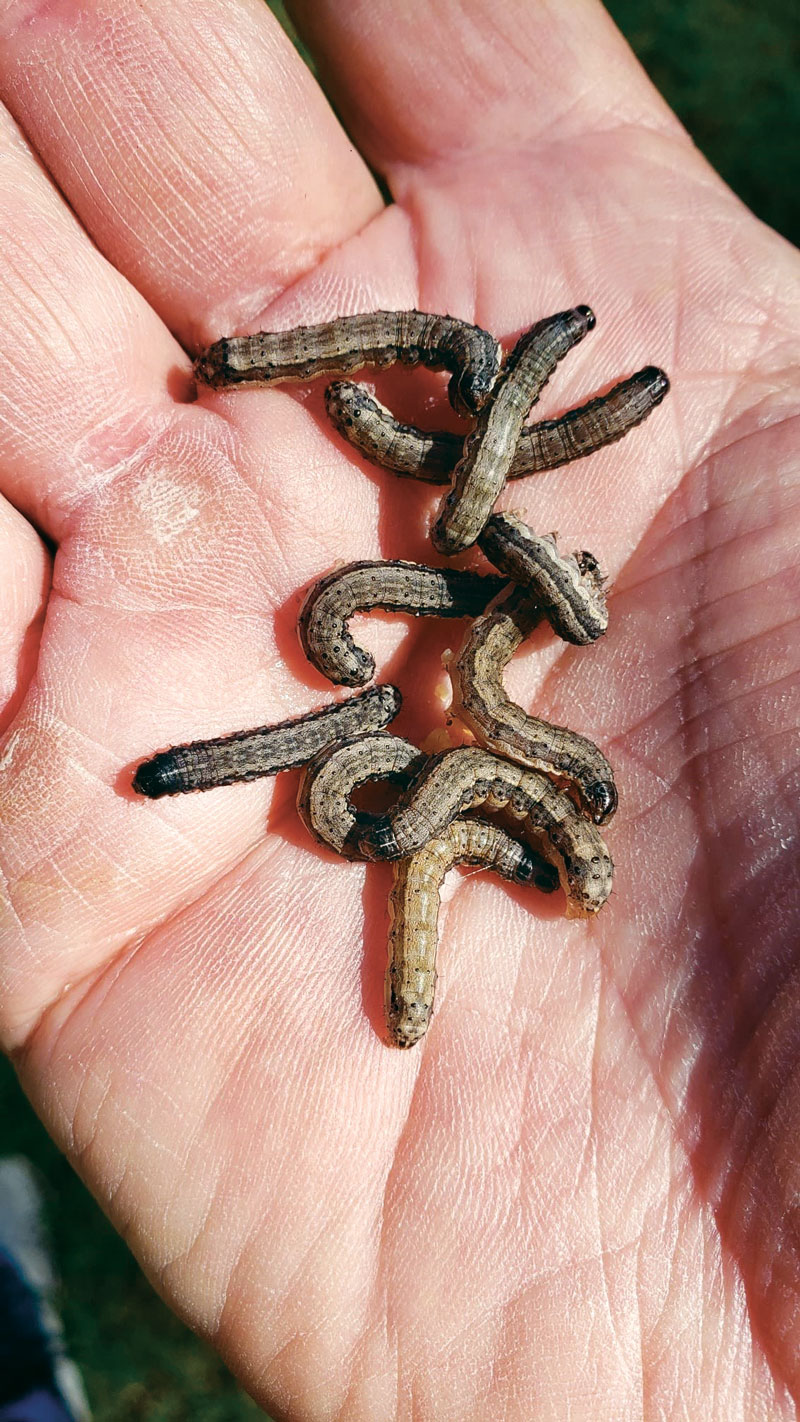Why prevention is key to managing fall armyworm

Photo: Rick Brandenburg
Although fall armyworm outbreaks are sporadic, as they vary in number from year to year and from location to location, they can be very damaging in large numbers.

Rick Brandenburg
Superintendents in some areas, such as the Southeast, experience issues more frequently than in other areas, like the Midwest. Regardless of location, fall armyworms can catch superintendents off guard, which leads them to react when it’s too late.
Experts say this is avoidable. First, watch out for birds feeding on the pest. Second, superintendents should scout for damage along the edge of the turfgrass. And, they can observe another usual issue: egg masses. By doing so, experts say they’ll stay ahead of fall armyworms. “If superintendents treat their turf for white grubs, it will likely have less problems,” says Rick Brandenburg, Ph.D., William Neal Reynolds distinguished professor of the department of entomology and plant pathology at North Carolina State University. “But that is not a 100 percent guarantee.”

Photo: Rick Brandenburg
An Ounce of Prevention
Brandenburg stresses that superintendents can utilize preventive treatments for fall armyworms. He adds that insecticides with active ingredients chlorantraniliprole, indoxacarb and tetraniliprole offer good residual activity. In addition, he says the residual length will vary, according to the product they choose, along with the rate at which they apply it.
“Superintendents should also consult their local experts for recommendations for preventive approaches,” he says. “The key is to not apply these treatments before the threat truly escalates.”
Brandenburg says if superintendents apply treatments in early summer, there won’t be much impact in the fall. However, applications in later summer with good residuals will provide ample protection when the pest pressure is highest.
“Fall armyworms aren’t too difficult to control if superintendents catch them early enough — before their damage is severe,” he adds. “Usually, we don’t see multiple infestations in the same location either. Once superintendents control them, the likelihood of a secondary infestation is slim.”

Ben Hamza, Ph.D.
FMC
Ben Hamza, Ph.D.
Director, product development, global specialty solutions
In general, they don’t overwinter, except in the southernmost areas of the U.S. Therefore, they resume their life cycles all over again, year after year. According to Rick Brandenburg, Ph.D., fall armyworms’ infestations have been observed on a more consistent basis — and have become problematic — over the last 10 to 15 years. Based on these latest trends, superintendents should be prepared for a greater likelihood of fall armyworm outbreaks during the second half of this summer. Turf managers must also start scouting for infestations along the edges and remain on alert until nighttime temperatures start to drop significantly. Since the outbreak of fall armyworms can take place in a relatively short time period, by inspecting for their presence — using a 2 percent solution of water and liquid dishwashing detergent in suspected areas — superintendents could help bring them to the surface and confirm their presence in roughly two or three minutes.

Rick Fletcher
Nufarm
Richard Fletcher
Technical services manager
Management of this pest still follows traditional practices, using preventative measures and integrated pest management (IPM) based curative measures. Longer-term systemic insecticides like clothianidin or chlorantraniliprole are effective on white grubs and have the environmental duration and insect spectrum to also manage this pest. Weather is a significant factor in the likelihood of fall armyworm outbreaks, based on their life cycles. Armyworms can only successfully overwinter as adults in the southern U.S., so there is an annual migration from south to north. The adult armyworm moths are strong flyers, capable of long-distance migration to northern states. The adults are often wind-assisted by weather events like hurricanes. Thus, multiple migration events are possible each summer as the typical life cycle is about 40 days.

Bret Corbett
Prime Source
Bret Corbett
Technical services manager
Adults can lay hundreds of eggs that hatch within two to 10 days. You can find egg masses on turfgrass leaves and other nearby areas, including barns, fence posts and mailboxes. Once the eggs hatch, the feeding begins and these larvae can destroy a turf stand within a few days. Treat larvae when they’re smaller, as they are most susceptible to treatments. Pyrethroids, carbamates, chlorantraniliprole and the bioinsecticide Crescendo — which can be applied alone or combined — are great options.

Matt Giese
Syngenta
Matt Giese, M.S.
Technical services manager
Diligent scouting for fall armyworms is still the best strategy for early detection and control. Small fall armyworm larvae feed for about 30 days and generally go unnoticed within the first 21 days. During the final week or two, the late-instar larvae are large and turf damage is much easier to see. Successful control measures can be more challenging against large larvae. Early detection through scouting can reduce the amount of turf damage and boost control success.

Ian Rodriguez, Ph.D.
Quali-Pro
Ian Rodriguez, Ph.D.
Technical services manager
Although their damage is very obvious — as they remove every leaf from their stems — the remaining turf basically looks scalped. Pyrethroids provide quick knockdown of even heavy infestations. Smaller stages tend to hide out in the thatch, so a higher spray volume, like two gallons per 1,000 square feet, can be helpful to maximize contact. Treating a “halo” area 10 to 20 feet beyond the visible damage can help slow or stop their continued spread.











